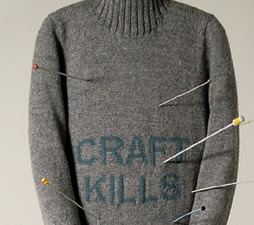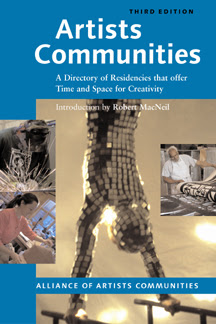The Drawing Center
 Artists, when visiting NYC, make a point of visiting The Drawing Center, a special small art museum with a unique mission devoted to drawing.
Artists, when visiting NYC, make a point of visiting The Drawing Center, a special small art museum with a unique mission devoted to drawing.
The following is an excerpt from The Drawing Center website:
"The Drawing Center has been a unique and dynamic part of New York City's cultural life since 1977. The only not-for-profit institution in the country to focus on the exhibition of drawings, it was established to demonstrate the significance and diversity of drawings throughout history, to juxtapose work by master figures with work by emerging and under-recognized artists, and to stimulate public dialogue on issues of art and culture.
Called "one of the city's most highly respected small art museums" by The New York Times, The Drawing Center has become the country's preeminent venue for important contemporary and historical drawing exhibitions, attracting more than 55,000 visitors annually from the local area, across the country, and around the world. The Drawing Center has presented more than 230 exhibitions, published over 70 catalogs, and toured its exhibitions to prestigious museums around the world, including: Tate Britain, London, and the Museum of Contemporary Art, Sydney, Australia (The Stage of Drawing); the Museum of Contemporary Art, Barcelona, Spain (The Prinzhorn Collection); and the Santa Monica Museum of Art (3 x Abstraction).
The Drawing Center's acclaimed exhibitions encompass a wide range of drawing traditions, such as Shaker Gift Drawings, Rajasthani Miniatures, Plains Indians Ledger Drawings, and Norval Morrisseau/Copper Thunderbird. Through a uniquely interdisciplinary approach, The Drawing Center's exhibitions have also related drawing to science (Ocean Flowers: Impressions from Nature), architecture (Constant, Inigo Jones, Louis Kahn), literature (Victor Hugo, Henri Michaux), theater (Picasso's Parade, Theater on Paper), film (Sergei Eisenstein), music (Musical Manuscripts), and choreography (Trisha Brown).
Historical Exhibitions focus on both acknowledged and under-recognized masters (such as Michelangelo, J.M.W. Turner, James Ensor, Marcel Duchamp, and Hilma af Klint) while Contemporary Exhibitions illuminate unexplored aspects of works by major living artists (such as Richard Serra, Louise Bourgeois, Ellsworth Kelly, Anna Maria Maiolino, Ellen Gallagher, and Richard Tuttle), and Selections Exhibitions present innovative work of emerging artists who are contributing to new interpretations of drawing. In the Drawing Room, which was opened across the street from the main gallery in 1997, emerging and under-recognized artists are encouraged to create experimental, cross-disciplinary work and site-specific installations.
Examples of artists whose work was first introduced to a wide public at The Drawing Center are: Terry Winters, Glenn Ligon, Janine Antoni, William Kentridge, Kara Walker, Shahzia Sikander, Margaret Kilgallen, and Julie Mehretu. The Drawing Center's Viewing Program has encouraged the development of thousands of emerging artists through one-on-one portfolio reviews with a curator, and through its curated public Artists Registry of over 2,500 emerging artists."
The currect exhibition on view at The Drawing Center is, Gego, Between Transparency and the Invisible
April 21 – July 21, 2007
Featured Artwork: Gego, Untitled, 1980-1982. Watercolor and crayon with scored lines on white wove paper, 26 1/2 x 18 7/8 inches. Museum purchase with funds provided by the Latin Maecenas in memory of Marisol Broido, the Museum of Fine Arts, Houston. © Fundación Gego.
 Amy Leidtke
Amy Leidtke

